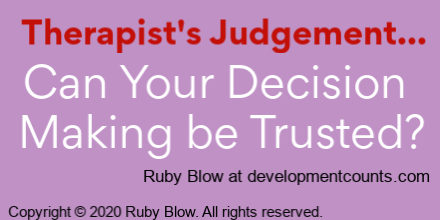It All Came Rushing Back
Last Friday, June 8, 2018… I was getting ready for a 5 hour training on “The Ethical Use of 1013’s in the State of Georgia.” The event was sold out. There were over 90 registrants. I was looking forward to seeing familiar faces and new faces. I was going through my mental rehearsal of the day (as I always do) when I heard the most horrifying news on CNN.
Celebrity Chef, world renown traveler and best selling author Anthony Bourdain died by suicide. I was stunned. I was in a daze. I thought about the designer Kate Spade’s death by suicide just a few days earlier. It wasn’t until I got into my car and started driving to the training event that I consciously started thinking about the client I lost to suicide.
I started to sob…it all came rushing back. I began to think about my client’s family and friends. I started to think about all of the families and all of the friends and all of the colleagues and all of the communities impacted by suicide. Lastly, I thought about all of the therapists.
The shame, guilt and loss for therapists who lose a client to suicide is profound. Many clinicians fear that they will be blamed. Others face increased scrutiny by their employer or agency. Additionally, therapists have real connections and relationships with their clients. We care for them and listen to their stories and pain in ways that few others can tolerate. A client’s death by suicide represents a profound personal loss for the therapist and often a crisis of professional confidence.
High Profile Suicide and Public Scrutiny
It bothers me that when there is a very public suicide there are also discussions suggesting that the person should have gotten help, or that the family should have done more. It bothers me because it is such an obvious oversight. The presumption is that the person did not seek help and/or that their family did not try to help them. It is true that not everyone who can benefit from therapy and treatment…seek it or receive it. It is also true that there are, and will continue to be, people who die by suicide and did seek help.
- There are people who sought and received help for years.
- There are families and friends who called for help.
- There are people who sat vigil over others to keep them from self harm.
- There were hospitalizations.
- There were often medications.
The Myth That We Can Save Everyone
As I’ve stated before, “We can’t hospitalize people forever.” What bothers me is the myth that we can save everyone. I agree that we should seek to intervene and prevent suicide. I know that many people can and do recover from suicidal thoughts and attempts and they do not go on to attempt suicide again.
Unfortunately, I also know that some people are chronically depressed and hopeless. I know, as many of you know, how insidious clinical depression can be. The mask that people master when they don’t want to be stopped is deceptive…because it also mimics the image of getting well.
People with a past or present use of substances are at higher risk. The secrecy surrounding relapse doesn’t help. People can go into isolation, even while surrounded by others. Some people who have struggled for a long time get tired. They have a hard time believing that they will ever experience relief. I think as much as the death of Kate Spade or Anthony Bourdain upset me, I was just as more saddened by the knowledge that they had lived in so much pain. I recall the psychic pain of my client and how we battled against it for many years.
Treatment can and does help many people with situational depression in particular. Treatment also helps many people who are chronically depressed in a sort of maintenance mode. They are not getting a whole lot better but they are also not worse. While medication can help. I think the general public believes that psychotropic medication will make it all better. Yes it is true that some people benefit from medication, yet others experience negative side effects that might include an increased risk for suicide.
I know the toll that all of this takes on mental health providers; the feeling that you should be able to save everyone. It is an unspoken but often experienced phenomenon. Treating people who are suicidal can be and is very scary.
What Can Mental Health Service Providers Do?
I am not suggesting nor would I ever suggest that we give up or stop working to intervene and reduce suicide as a cause of death. What I am saying to all of my mental health colleagues is…Do what you can; get support for yourself; and know that a client dying by suicide is a real risk of the profession. It also an increasing probability depending on the population you serve and how long you work in the field. Though we try our best, we won’t be able to stop or save everyone.
There are ways to work with suicidal clients that are very helpful and provide a framework. I like the CAMS approach – The Collaborative Assessment and Management of Suicidality. You can learn more about this approach by buying the book by David A. Jobes or reading the numerous journal articles on the topic.
I also encourage therapists to build and maintain circles of professional and social support. I am every grateful for the support of colleagues, family and friends. As a revered colleague of mine, Phil Foster, LPC says “Be good to you.”
Copyright © 2018 Ruby Blow. All rights reserved.
Share your thoughts on Linkedin, Facebook, Twitter or log in to one of your accounts below to comment. Subscribe to my YouTube channel.





